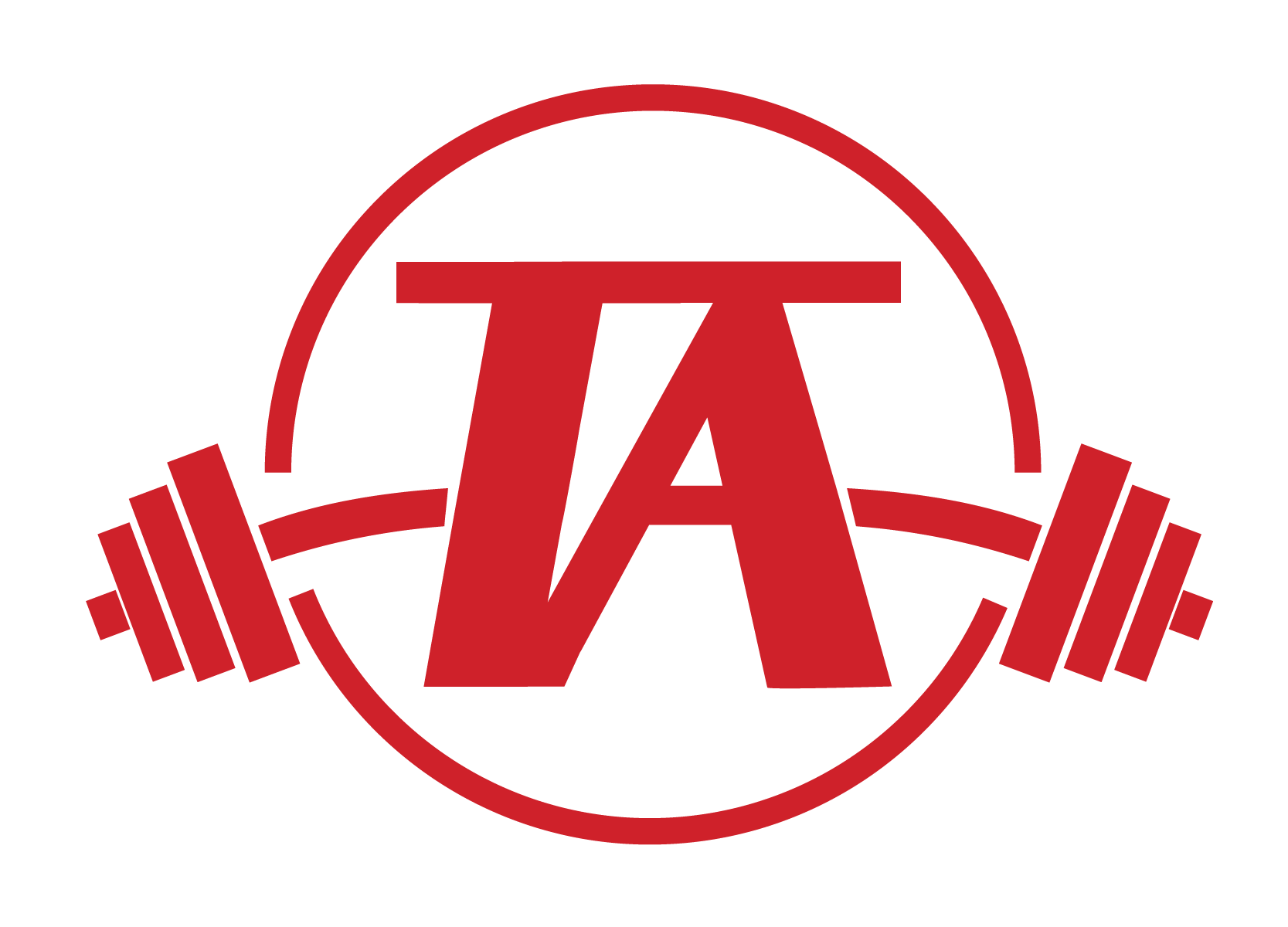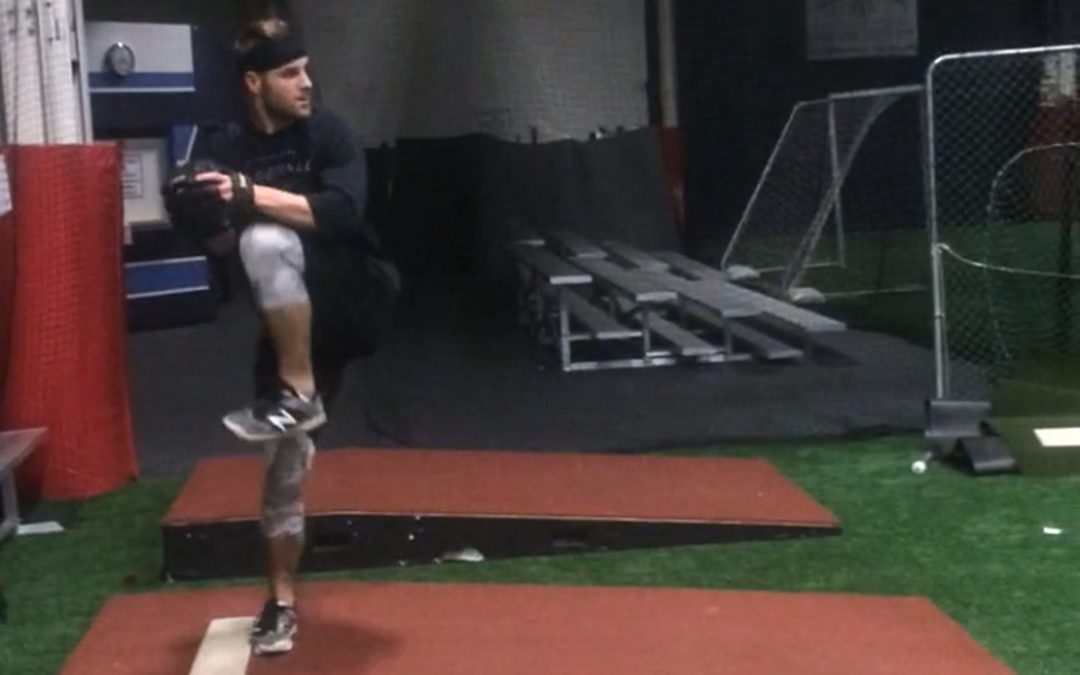Throwing velocity is a complex topic that involves the intersection of many different ideas and training philosophies in order to improve. In order to reach your highest possible throwing velocity, your “mechanics” have to be “good” or biomechanically sound, but what does any of that even mean? Good mechanics require the interaction of elite positions and rhythm, with ideas from Chaos Theory playing an important role. Let’s dig into the first part of this series and talk about positions.
Before we get into the process of identifying and discussing the key positions in high velocity deliveries, a simple definition and goal should be identified for pitching mechanics.
Pitching mechanics are the set of positions that fit together rhythmically to create a unique movement that results in an athlete’s ability to throw a baseball at a given velocity and to a desired location. The goal of pitching mechanics is to produce the highest possible velocity, the best opportunity to command pitch location, and the lowest possible injury risk given the individual athlete’s underlying abilities. Note that I mentioned multiple times that pitching mechanics are unique and individualized. While every pitcher will move a bit differently, there are certain checkpoints we can use to help them maximize their abilities.
If you’ve been reading my articles for a while now, you’ve read about key performance indicators (KPIs) before. KPIs can be used in any field and for any skill that you desire to improve, provided that you understand the skill deeply enough to break it down into its component parts. Within the broad category of a skill, KPIs can also be used for different subsections of that skill. In the case of this article series, we’ll be discussing positions that are KPIs, the rhythm that helps transition athletes between positions, and the necessary underlying abilities that must be present in order to achieve said positions.
The Positions
The positions we’ll be using are as follows:
- Peak Leg Lift
- Lead Foot Contact
- Maximum Layback (often referred to as maximum external rotation or MER)
- Ball Release
- Maximum Internal Rotation
Peak Leg Lift: The point at which the lead leg is at its highest point. This is sometimes referred to as the balance point, but I’ll discuss later why I chose a different term.
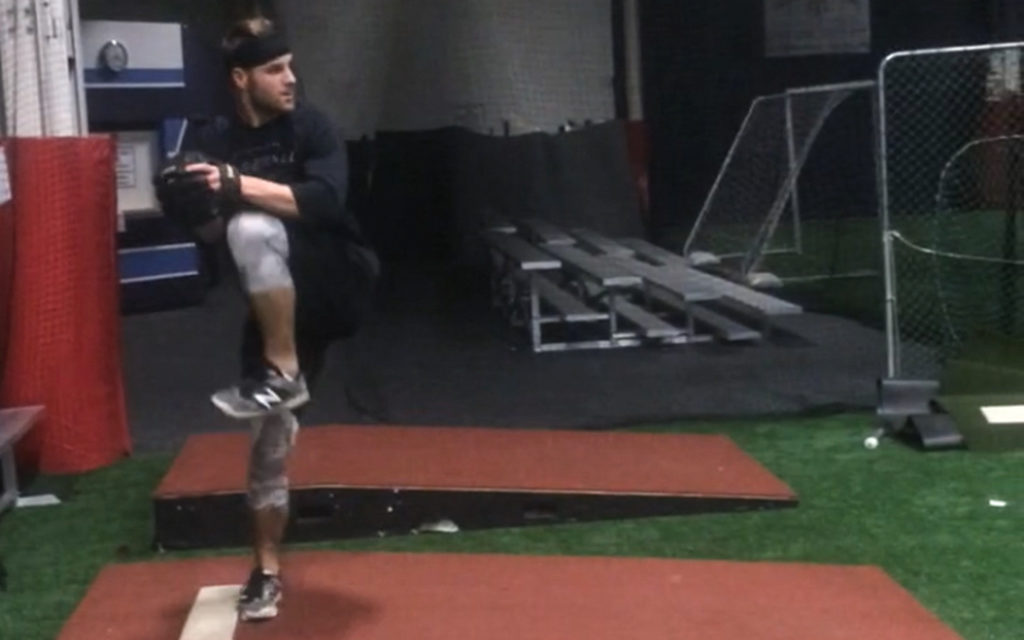
Lead Foot Contact: The point in time when the pitcher’s lead foot fully bears weight. This means not just contacting the ground, but the point in a video when you can see the ankle stiffen.
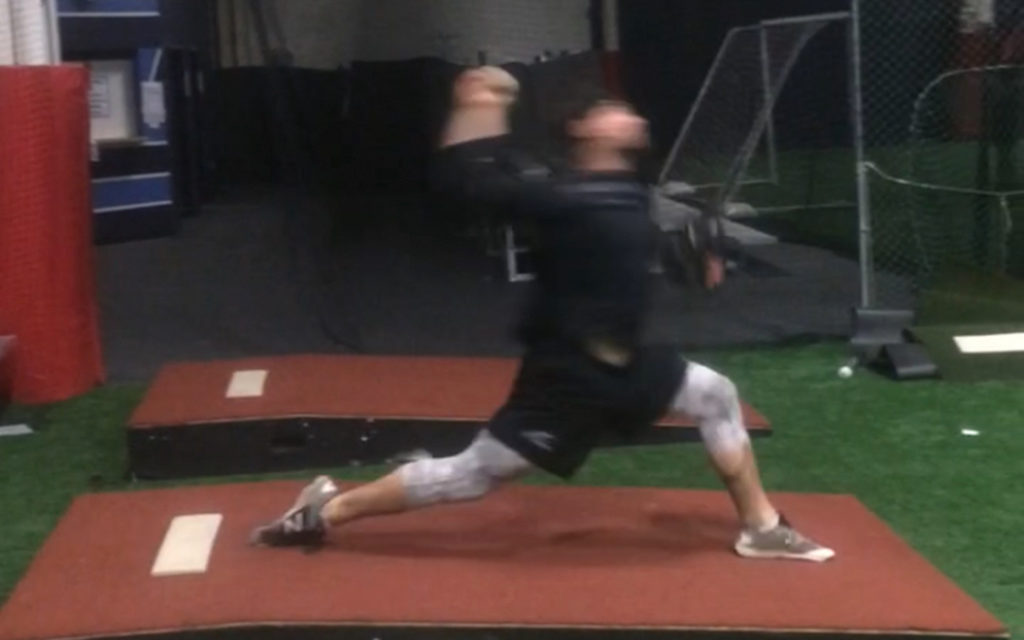
Maximum Layback: The point when the forearm is as far back as it will go, prior to being accelerated forward.
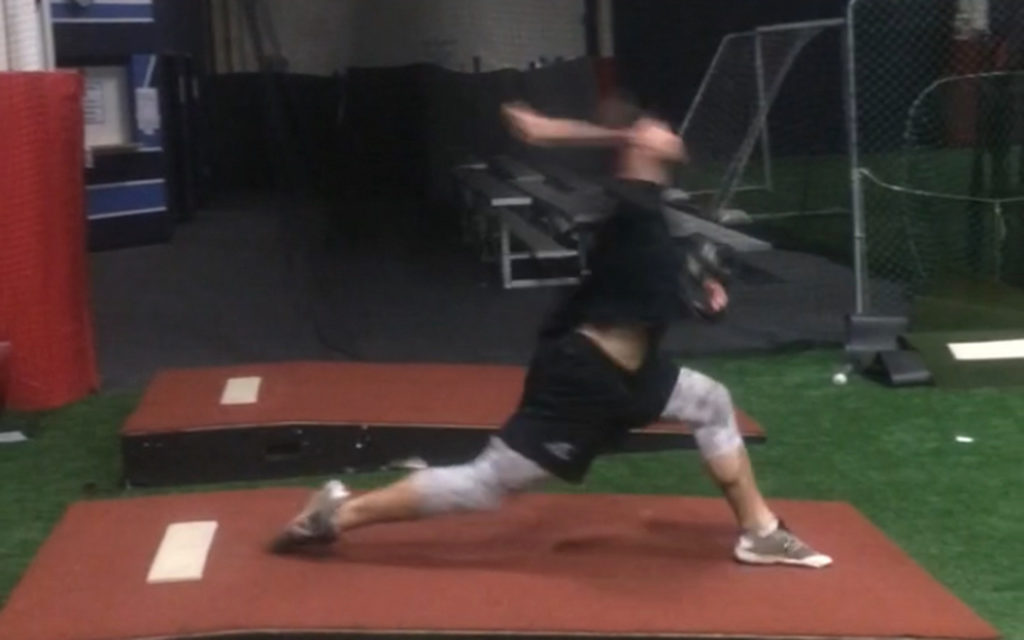
Ball Release: The point the baseball leaves the pitcher’s hand.
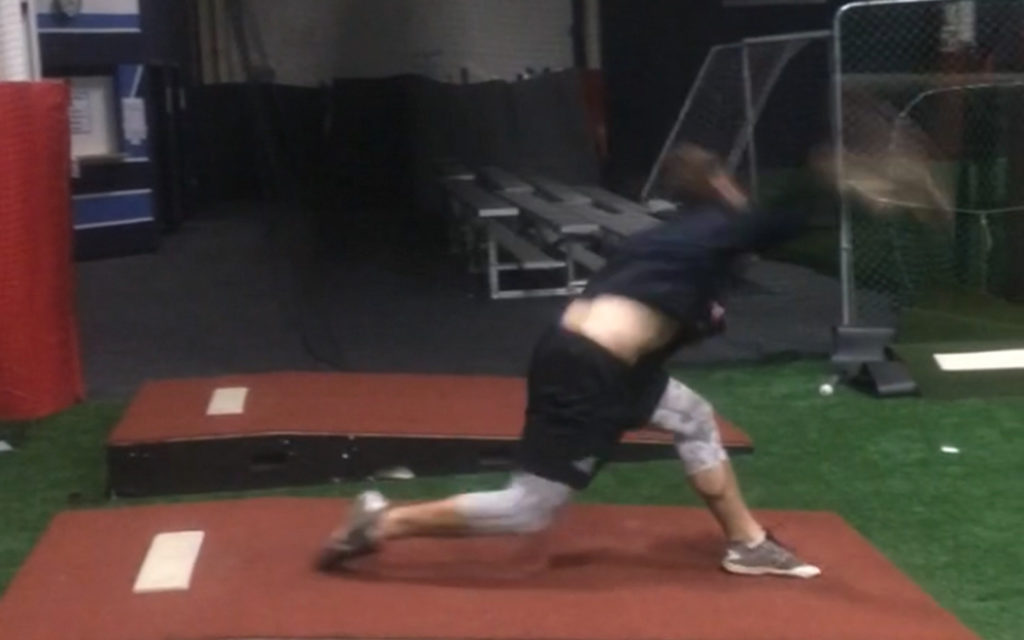
Maximum Internal Rotation: The point when the shoulder ceases any further internal rotation and there is no further scapular anterior tilt or upward rotation.
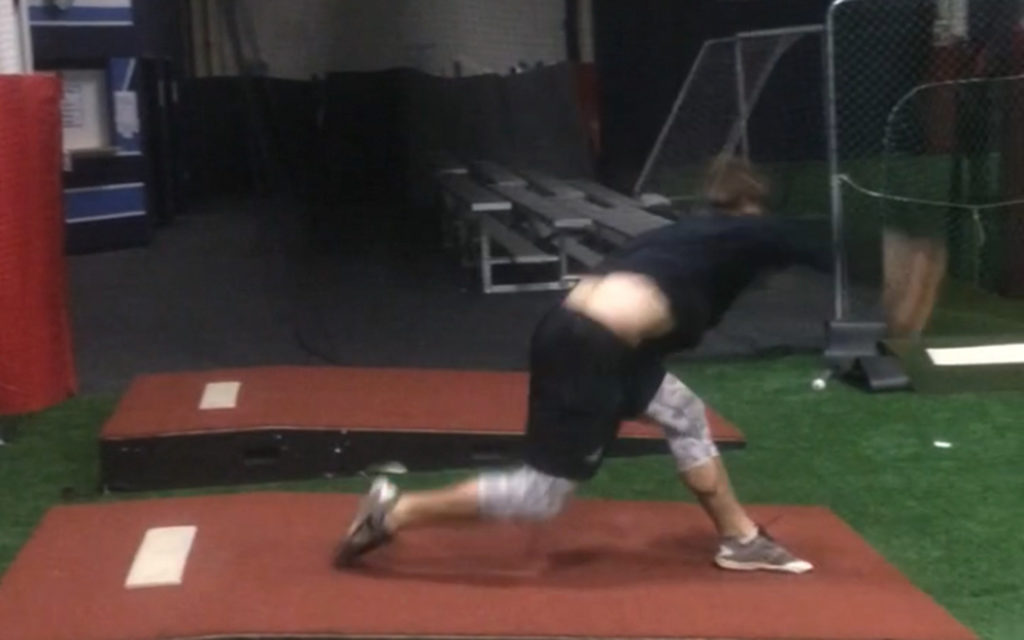
Now that we’ve identified the key positions that take place during the pitching delivery, what about these positions differentiates high velocity and low velocity pitchers?
Peak Leg Lift
The position at peak leg lift helps to set up the entire delivery. It’s important to note that the height of the leg lift does not matter in and of itself. That is, a higher leg lift does not necessarily mean higher velocity will occur and a lower leg kick or slide step does not mean high velocity will not occur.
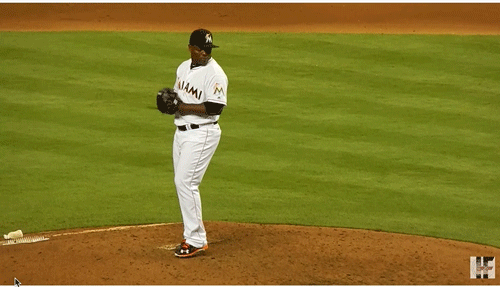
What can help determine the level of velocity is the distance the center of mass moves forward. This is known as center of mass shift or drift, hence “peak leg lift” and not “balance point;” there is no balancing if this position is achieved. This shift helps the pitcher to apply more force in the “x” vector, toward the plate. If a pitcher stays “over the rubber,” as some coaches preach, they apply force from their back leg in a disproportionately vertical direction (“z” vector). This can not only affect the sequencing of movements, but it also reduces the benefit a pitcher derives from the linear portion of the pitching delivery.
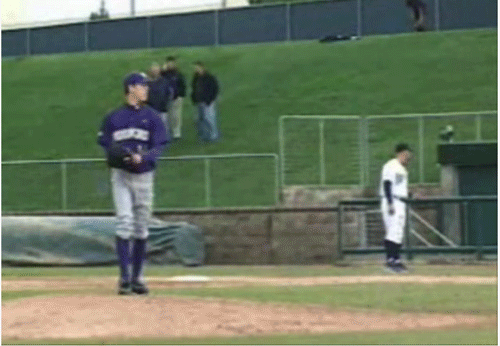
A low velocity pitcher will get very little separation from the rubber and often end up “pushing or triple extending” leading to the inability to segment hip and shoulder rotation, causing poor elastic energy storage and release, and lower ball velocity.
Lead Foot Contact
At lead foot contact the hips should be fully or almost fully “open,” meaning they are facing the catcher, with the upper torso still coiled and upright. The front knee should be behind the ankle, and from this point forward in the delivery there should be no more knee flexion. If the knee flexes more after this point, energy is not being efficiently transferred up the chain (van Trigt et al., 2018).
Lead foot contact is the point in the delivery when stability becomes especially important. A significant amount of momentum should have been built up to this point and the lower body is now tasked with abruptly stopping that momentum. The front leg is encountering ground reaction forces (GRF) often 2x bodyweight in both the “x” and “z” vectors (Guido and Werner, 2012). Higher GRF against the direction of the throw are associated with higher ball velocity (Guido and Werner, 2012).
In addition to the stability required in the lower body, the upper body needs significant stability as well, as it must resist rotation in the upper torso and deformation at the lumbar spine. The core musculature must be strong enough that the lumbar spine remains stable and provides a firm base for the thoracic spine to rotate around. Without core stability, power output will be reduced as this has often been likened to “firing a canon from a rowboat.”
The differences between high and low velocity throwers at this checkpoint will be noticeable in the knee flexion angle, the degree of horizontal abduction, how much the arm is flipped up, and the degree of separation between the hips and upper torso.
Higher velocity throwers will tend to have a greater knee extension angle, greater horizontal abduction, the arm will be flipped up between 45 and 90 degrees relative to the ground, and the hips will be nearly fully open while the chest will be facing third base (if the pitcher is right handed) or slightly more counterrotated.
Knee extension angle is important as it likely means the lower body has been decelerated and energy has been effectively transferred to the torso. If the knee continues to flex after contact, momentum is not stopped and the front foot/leg cannot provide a stable base for the upper body to rotate around (the firing a canon out of a canoe analogy works here too). Additionally, if the lower body has not been fully decelerated, the pitcher cannot accelerate the upper body at its maximum velocity due to the summation of speed principle. This principle states that the speed of each link in the kinetic chain should be faster than the previous, due to the transfer of energy and full deceleration of the previous link.
Horizontal abduction is important as it can give an idea of how much the pec will contribute further into the delivery. The pec is one of the major accelerators of the arm. If there is not a significant pre-stretch on it at this point in the delivery, it is unlikely it will contribute as significantly as possible further in the delivery. This can lead to inefficiencies and reduced velocity (check out this article for more details).
The degree to which the arm is flipped up tends to work hand in hand with horizontal abduction. In that, if the arm is not flipped up between 45 and 90 degrees at this point in the delivery, similar inefficiencies are likely to occur (pushing arm action or at the very least reduced pec recruitment). Additionally, the forearm should be close to 90 degrees in relation to the humerus. This makes the upcoming layback more efficient and may help reduce valgus torque at the elbow (Aguinaldo et al., 2009).
The amount of hip/shoulder separation helps to show how effectively the movements of hip internal rotation and upper torso rotation have been segmented in order to take advantage of the summation of speed principle and how much elastic energy may be stored. If the back hip is lagging in turning over or if the shoulders are already facing the plate, the movements are not sequenced properly and velocity will likely be diminished. Hip/shoulder separation also helps with applying force to the baseball over a greater arc of motion.
Maximum Layback
After the pec has been fully stretched and loaded it begins to pull the arm forward. When this happens the inertial mass of the baseball increases and lays the arm back. This stage is often referred to as maximum external rotation in the literature, however, this term does not fully capture what is happening. Layback is a combination of three movements, not merely glenohumeral external rotation.
In order for the arm to get close to 180 degrees, as it is for many high velocity throwers (Matsuo et al., 2001)
- thoracic spine extension,
- scapular posterior tilt, and
- glenohumeral external rotation
must work together to find this range.
Greater layback is helpful for a few reasons. More layback helps increase the distance over which force can be applied to the baseball, and everything else being equal, this will lead to higher velocity and is the overarching goal of a high velocity delivery. It also helps to put a pre-stretch on the internal rotators and makes for a more powerful contraction when the arm reaches maximum acceleration.
High velocity throwers will tend to be close to 180 degrees, while lower velocity throwers will be closer to 166 degrees (Matsuo et al., 2001). However, a limitation here can be overcome if the pitcher has especially long levers. As I said earlier, the goal is to apply force to the baseball over the largest arc of motion possible, so if the pitcher has long enough arms and is efficient elsewhere in the delivery this may not be an issue.
Ball Release
Ball release is the culmination of the pitching delivery. The instant of ball release reveals a few things about the quality of the pitching mechanics. At this point we can look at the knee extension angle, the position of the hand relative to the body (late or early launch), the glove arm, and the angle of the spine.
High velocity throwers will have greater knee extension than their lower velocity counterparts, due to the efficiency of energy transfer when the lead leg effectively stops forward momentum.
Late launch is a term coined by Ron Wolforth that basically means the ball is released in front of the line of the shoulders.
As a side note, this is what many pitching coaches mean by “extension” even if they don’t quite know how to describe it. High velocity throwers tend to exhibit late launch.
This is a product of thoracic rotation, effectively sequenced arm action, and forward flexion of the torso. The position at ball release can give us an idea of how effectively a pitcher uses their spine like a whip. Meaning are they able to bow, flex, bow like Paul Nyman talks about? This means going from a position of relative flexion at peak leg lift, to thoracic extension during lead foot contact, and then forward flexion heading into ball release.
Additionally, some athletes will tend to be too linear with their delivery and will not rotate their shoulders effectively, leading to early launch and ineffective energy transfer. The glove arm can play a significant role in this rotational portion. If the glove arm is too medial (toward the midline of the body), rotation may be limited, as the glove side scapula does play a role in beginning upper torso rotation. If late launch is not present at ball release, it is likely that the pitcher has an issue with the bow, flex, bow idea, or they are too linear, whether due to their glove arm or other factors to be discussed in a future portion of this article series.
The hand position is also important here. The beginning stages of pronation should be present. The degree of pronation will vary from pitcher to pitcher, but there should not be any supination at this point. Pronation is present to help protect the passive restraints. When the forearm pronates, it helps keep the elbow from reaching terminal extension and banging the olecranon into the olecranon fossa, as well as helping to protect the UCL through a contraction of the musculature around it.
Maximum Internal Rotation
Maximum internal rotation occurs after the ball has been released and helps to decelerate the arm. At this point, we’re looking for the thumb to be at least slightly turned down showing pronation. As I said earlier, the amount of pronation will vary from athlete to athlete. As long as some pronation is occurring, we can assume that there is some muscle contraction happening around the elbow, helping to protect the passive restraints.
The scapula should be anteriorly tilted and protracted with the shoulder internally rotated. If there is a limitation here it will need to be examined, as poor deceleration patterns can limit velocity and potentially affect health.
Conclusion
Positions alone don’t lead to high velocity. However, they help pitchers get the most out of their deliveries when combined with proper rhythm.
Stay tuned for Parts 2 and 3 of this series where I’ll discuss how rhythm fits together with positions to create a high velocity delivery, and how pitching mechanics can be effectively changed.
References
van Trigt B, Schallig W, van der Graaff, Hoozemans M, Veeger D (2018) Knee Angle and Stride Length in Association with Ball Speed in Youth Baseball Pitchers. Sports.
Guido JA, Wener SL (2012) Lower-extremity ground reaction forces in collegiate baseball pitchers. The Journal of Strength and Conditioning Research.
Aguinaldo A, Chambers H (2009) Correlation of Throwing Mechanics With Elbow Valgus Load in Adult Baseball Pitchers. The American Journal of Sports Medicine.
Matsuo, Tomoyuki & Escamilla, Rafael & Fleisig, Glenn & W. Barrentine, Steven & R. Andrews, James. (2001). Comparison of Kinematic and Temporal Parameters between Different Pitch Velocity Groups. Journal of Applied Biomechanics. 17. 1-13. 10.1123/jab.17.1.1.
